
Snub-nose revolvers are a staple of the defensive handgun world, but are they still worth carrying given other available options?
Commonly referred to as “snub-nose” or “snubby,” the sub-3-inch revolver has been a mainstay of self-defense for over 150 years and is even now a common, everyday item for millions of Americans. The thing about these guns is that they’ve always been a severe compromise and are, in terms of overall features and ammunition, something of a vestigial holdover of two bygone centuries. Nevertheless, we love these guns and their cartridges, and the technology around them has continued to improve.
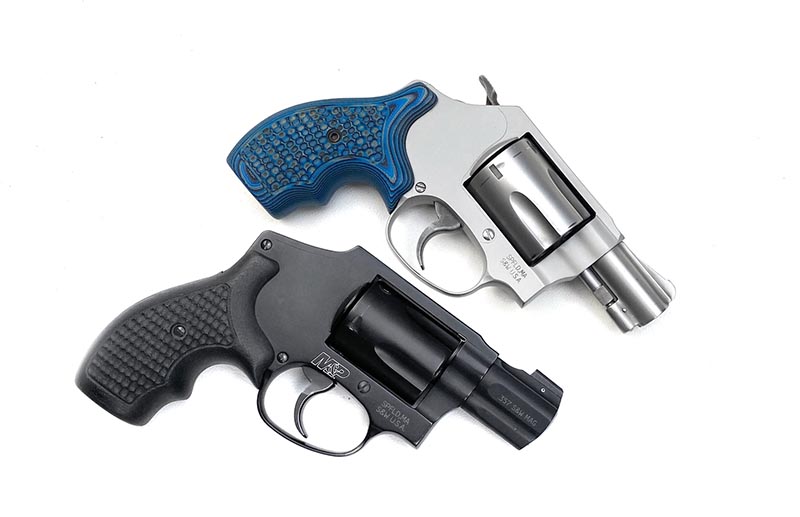
Tradition Or Travesty?
Revolvers are deeply entrenched in the American mind—and for good reason. We relied on them on the frontier and while our nation expanded. Indeed, the brands in this article, Smith & Wesson and Colt, were present in these foundational episodes. There’s certainly a sentimentality about revolvers in this country, and this drives both dreams of yesteryear and ideas to make these guns more relevant in a semi-auto era.
I don’t see the development of new revolvers and ammunition as a net negative, nor do I feel that they are irrelevant for self-defense. If you spend a moment in the gun community, you’ll see that we have indeed come a long way in terms of how much ammo can be fit into a tiny polymer gun. Sig Sauer’s P365 is a perfect example, itself a trendsetter in that it opened a new competitive market for high-capacity micro nines. I have a P365 and carry it regularly; it holds 12+1 rounds as opposed to five with my favorite J-frame. Yet, when I go about town, I usually have the latter on me.
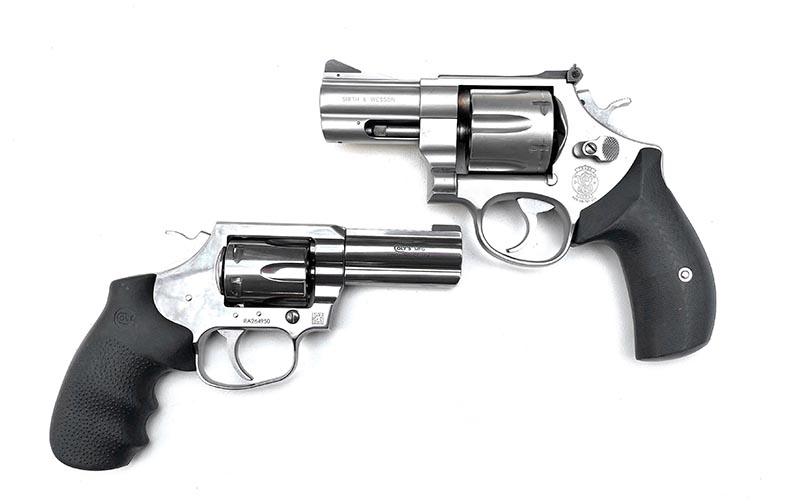
There’s a prevailing mindset that five shots are simply not enough. We live in a world where looters and rioters are apparently allowed to have the run of a whole city, and you may end up facing an armed mob of dozens. An old friend of mine once told me that in the modern day, a revolver is a gun you carry among civilized people in case of an anomaly, not something you have if you’re expecting violence in bad places. I don’t know how true this is overall, but the philosophy should be to have a gun in the first place, even if that gun isn’t the most advanced on the market.
Considerations For .38 & .357 Snub-Nose Revolvers
I carry a revolver most days as a regular item about my person. For me, the J-frame M&P 340 (no lock version) in .357 Mag. is just about ideal for going about my day. It’s exceedingly light and fits in a pocket. This merit alone ensures I have a supremely reliable self-defense gun on me, especially when I don’t feel like dealing with the weight of something larger. The size factor alone, combined with the reliability of a revolver, is the reason I carry it. I have plenty of other options; however, for my considerations and lifestyle, it’s excellent.
What I consider a strong benefit of these guns is ammunition variety. It’s true that there isn’t a huge amount of dedicated ammunition out there for short-barreled revolvers—most is geared to 4-inch guns or longer. Most .357 Mag. ammo out there is wasted in a short barrel in that, while it produces higher velocity and energy as compared to a .38 Special or .38 +P, it’s not often ideal for such small guns. I like that the S&W 340 has the ability to chamber and fire .357 Mag, but I don’t make a habit out of it, nor do I often carry it with anything other than .38 +P.
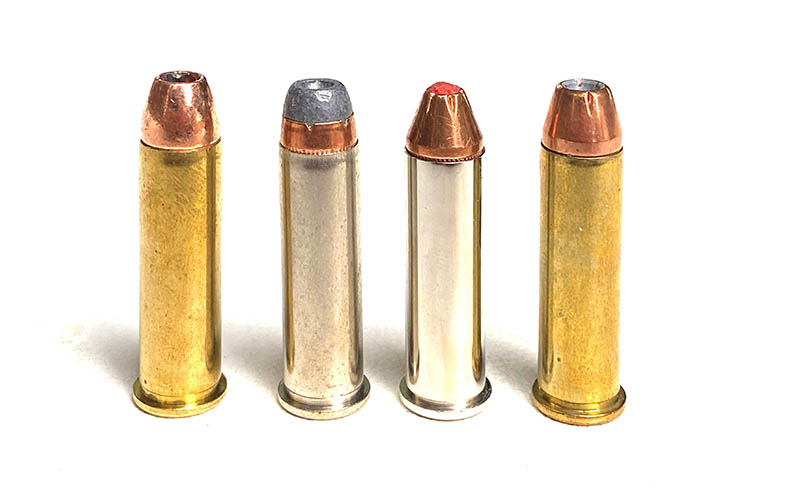
I really like the .357 Mag., but I like it most in guns over 3 inches just from a standpoint of getting more speed for the price paid in recoil. Dedicated .357 short-barrel loads are hard to come by, but they do exist. Buffalo Bore makes two loads advertised for the 2-inch class short-barrel .357 Mag., both featuring Barnes bullets, these being the XPB 125-grain and 140-grain at 1,225 fps and 1,150 fps, respectively.

I’ve tested these loads from several .357 Mag. revolvers and found that, while the velocity is definitely there, it’s the mechanical function of the bullet that sometimes isn’t. I’ve shot these loads in the 340, as well as the shorty eight-shot 327. About half the bullets failed to expand, even at point-blank range in bare gel, and offered penetration generally between 12 and 14 inches. Moving to a slightly longer barrel or a standard 4-inch yielded substantially better results.
In testing a wide variety of .38 Special and .357 Mag. ammo in short barrels, I’ve concluded that the only way to really get effective performance is to accept that you’re working with a compromise and reduce your variables accordingly.
Tried And True
There are plenty of good and great options out there for this class of firearm. I think that the ammunition variety alone is a reason to have one in that it’s not at all picky about what you put through it. While firing isn’t usually the problem, what that bullet does when it hits is another story.
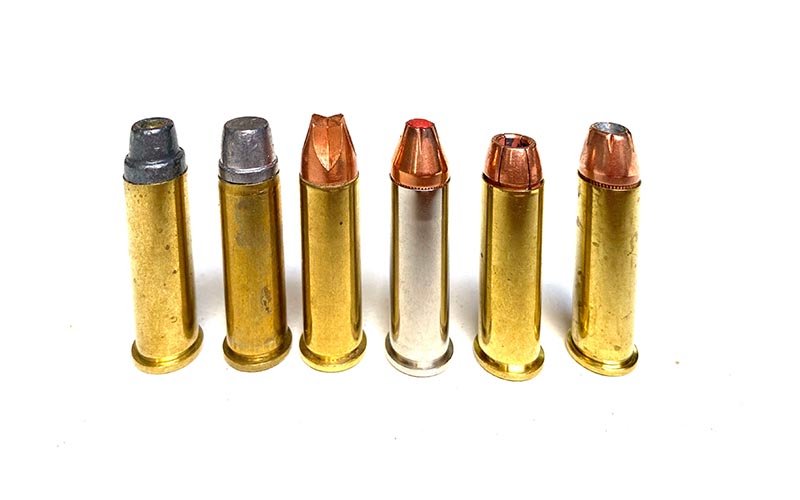
Our Top Articles on CCW for Everyday Carry
- Best Concealed Carry Pistol [Range Tested]
- Best Concealed Carry Pistol for Women
- Best Concealed Carry Pistol Upgrades
- CCW Insurance – Concealed Carry Insurance Options
- Best Concealed Carry Optic – Results from a Groundbreaking Study
I’ve tested so many kinds of ammo from snubbies in gel and material that I need a full notebook to keep track of it. Failure rate of projectiles is high, a failure being constituted by a bullet not expanding, breaking apart or not offering sufficient penetration. Bullets are one of those things rarely tested by a third party.
In most of my testing in gel and materials, I’ve come to expect a 25-percent failure rate for any given projectile, but I’m confident in saying that it’s a much higher failure rate for snubby ammo. This has to do with the fact that most of these bullets are either too soft and break apart, sometimes on impact, or too hard to expand and deliver energy into tissue. The main culprit is that much of the advertising out there only looks at bare gel—the second you introduce even a basic T-shirt, the wheels start to fall off.
I look at it pragmatically: If you can’t guarantee a velocity necessary to allow for a bullet to expand reliably, you need to remove that from the equation. The technology around short-barreled revolvers should, in my opinion, be focused entirely on penetration and nothing else. Expansion is great, but if you’re starting with as little barrel as you can physically have, there needs to be something that gives. This is the case in point for why this technology was perfected so long ago, but at the time it wasn’t known to be at its peak.
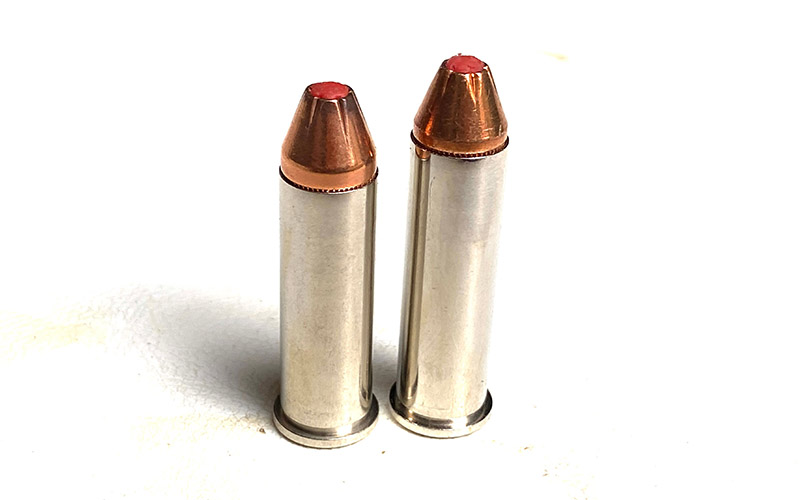
Big-Bore Snubs
The weird world of revolvers encompasses guns so small they fit on a belt buckle … and guns so large they’re chambered in the likes of .45-70 Government. There are plenty of guns we count as “big-bore” that fit into the snub-nose category. Many of these are specially made pieces in .44 Special or .44 Magnum, .41 Mag., and even rounds like .480 Ruger. These sub-3-inch guns are almost universally meant for self-defense in places where you have a greater chance of getting eaten than robbed.
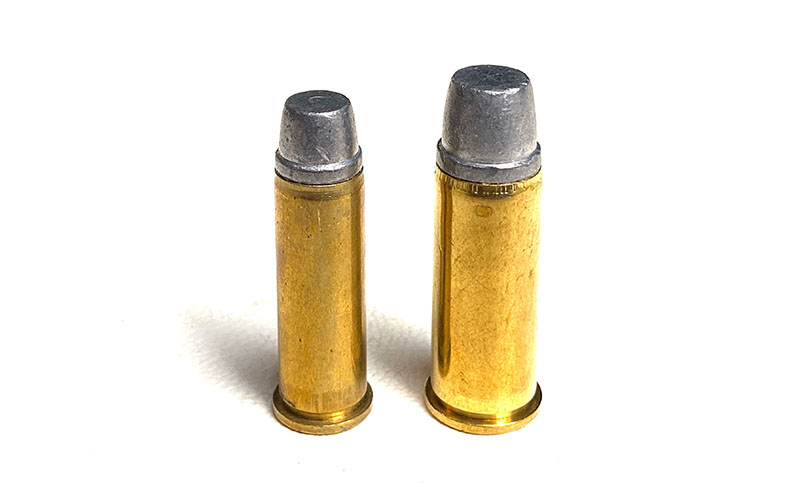
The .44 Special is one of the unsung heroes of the snubby world. On merit of size and ballistics, it’s almost impossible to beat. Not only can it launch 200-grain bullets at 1,000 fps from a 2.75-inch barrel, but it also offers low recoil and is quite easy to master for most shooters. Smith & Wesson makes a gun called the 69 Combat Magnum (it’s in fact chambered for .44 Mag. but can shoot .44 Special). I’ve put countless rounds through it and love everything about it—except that it’s made of steel and weighs 35 ounces. What I want is that exact profile but with a 2-inch barrel and made in scandium and titanium, ideally in the 20-ounce range.
While I can keep dreaming about my ideal .44 Special, there are plenty of other short-barreled revolvers out there in more practical offerings like .45 ACP. I have a rare Model 1989 in .45 ACP with a 3-inch barrel. While on the edge of what we call a snubby, it’s fantastic using .45 Auto Rim brass for heavy loads. I use a jacketed Hornady 200-grain XTP .451-inch bullet in this for 1,150 fps, and it shoots point of aim to 50 yards.
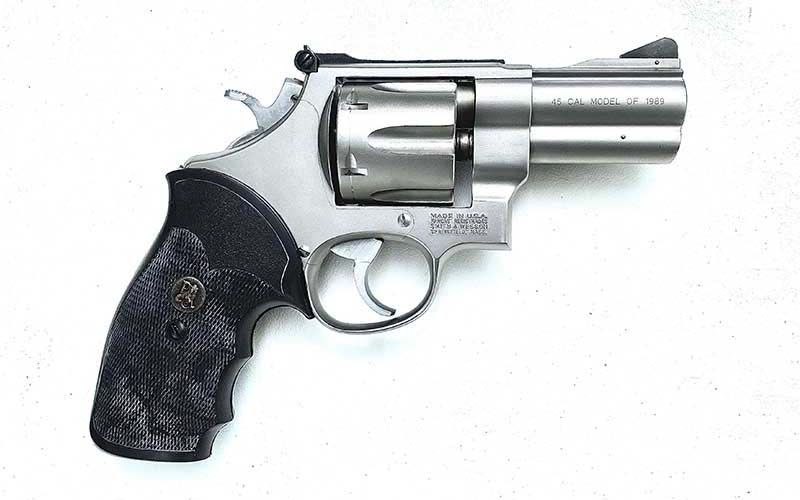
Notable Snubbies
Kimber has pleasantly surprised me with their K6. Not only is it a very well made and reliable gun, it also holds six rounds in the same general size as the five in a Smith J-frame. I really like that they pulled this off, and the ones that I’ve handled and fired have been very nice considering that Kimber is so new to the revolver game. It’s slightly heavy as compared to a comparable Smith, but it’s an entirely new design.
Colt has recently come back swinging with their revolver offerings. I’ve had the pleasure of firing most of their new “classics” and found them to be very slick. Like the K6, they boast a six-shot capacity but are again slightly larger than the J-frame. I really appreciate that Colt has come back with these; collectors and purists aren’t exactly happy, but I’m completely fine with them. I especially like their Night Cobra.
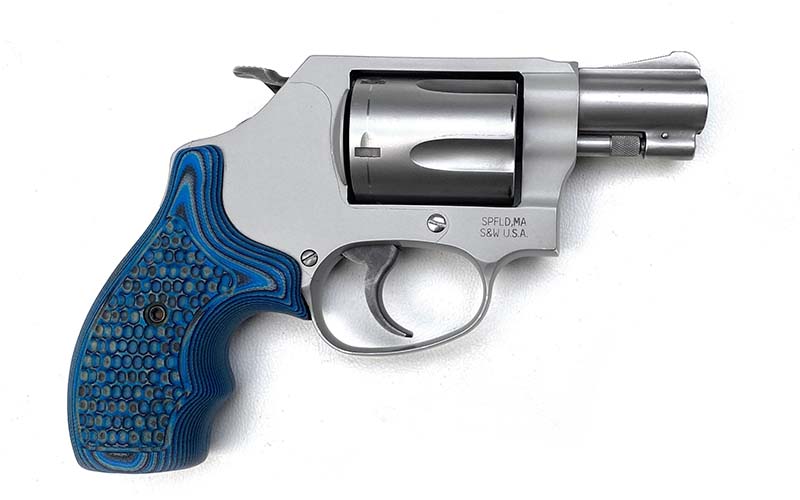
Ruger has always had some great snubbies—their LCR redefined the class when it was introduced. If you count their large guns as “short barreled,” they make some of the most powerful sub-3-inch guns around.
Well, Should You?
With all the exceptional polymer concealed carry guns available, carrying a snubby these days is certainly controversial, especially when considering ammunition to feed it. My best advice is to do your homework, determine what works best for you and your lifestyle … and then train like your life depends on it, because it might.
Without that training, hitting a target (imminent threat) while under a tremendous amount of stress means that errant rounds are going to be as much of a concern as potential over-penetration.
Editor's Note: This article originally appeared in the CCW 2022 special issue of Gun Digest the Magazine.
More On Defensive Revolvers:
- .357 Magnum Revolver: Controllable Concealed Carry Options
- 9 Best Concealed Carry Revolvers For Personal Defense
- Fighting Revolver Project: Smith & Wesson Model 586
- Rolling With A .45 ACP Revolver
- .410 Revolvers: Are They Really Good For Nothin’?
- Best 9mm Revolver: 5 Options For Everyday Carry

Next Step: Get your FREE Printable Target Pack
Enhance your shooting precision with our 62 MOA Targets, perfect for rifles and handguns. Crafted in collaboration with Storm Tactical for accuracy and versatility.
Subscribe to the Gun Digest email newsletter and get your downloadable target pack sent straight to your inbox. Stay updated with the latest firearms info in the industry.

![Best Concealed Carry Guns In 2025 [Field Tested] Wilson Combat EDC X9S 1](https://gundigest.com/wp-content/uploads/Wilson-Combat-EDC-X9S-1-324x160.jpg)


![Best 9mm Carbine: Affordable PCCs [Tested] Ruger Carbine Shooting](https://gundigest.com/wp-content/uploads/Ruger-Carbine-Shooting-100x70.jpg)
![Best AR-15: Top Options Available Today [Field Tested] Harrington and Richardson PSA XM177E2 feature](https://gundigest.com/wp-content/uploads/Harrington-and-Richardson-PSA-XM177E2-feature-100x70.jpg)

Summertime with shorts, it’s a S&W 642 in a pocket holster with Federal Hydra-Shok low recoil 38 special. In winter it’s a Glock 26 in a OWB holster with Federal HST 124gr.
I’ve gone back to revolvers. Snubbies in particular. My simple work around is to carry 2 6 shot. Primary is a 3 inch and secondary is a 2 inch. I sometimes carry a derringer as a tertiary. All the same caliber so I can use the same speed strips for all and the same speed loader for the revolvers.